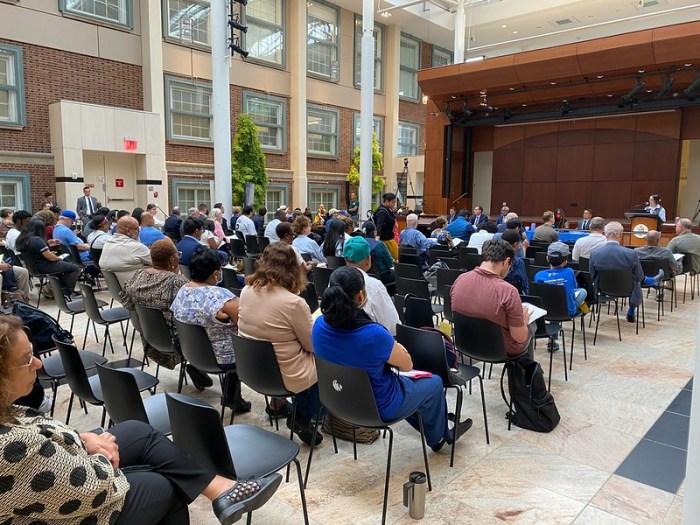By Tom Momberg
The state Senate shot down a bill last week that would have given the city Department of Education the ability to set admission criteria for its nine designated specialized high schools, like Queens High School for the Sciences at CUNY York College.
The bill, S1787A, introduced into the Senate by state Sen. Adriano Espaillat (D-Manhattan), would have removed the Specialized High School Admissions Test, or SHSAT, as the sole evaluation measure for admittance into the high schools. The top scores win the coveted seats without consideration for gender, race or any other criteria.
Because students who attend the specialized high schools are largely accepted from higher-income neighborhoods, the bill had sought to bring diversity to the schools by allowing the DOE to take grade point average, personal statements and letters of recommendation into account for admittance.
The bill’s written justification: “Using this test as the sole basis for admission further exacerbates the racial gap persistent in the enrollment of these schools … Research has consistently shown that minorities perform worse on standardized test than their white counterparts. However, these students are no less capable or intelligent.”
The bill cited research showing that most students in the specialized high schools are either white or Asian, although the vast makeup of city public schools is Hispanic and black.
According to a 2012-2013 study conducted by the New York City Independent Budget Office9, students in the specialized high schools came from census tracts where the median household income averaged roughly $62,500, as opposed to an average of about $46,400 in other city high schools.
Only 11 percent of specialized high school students came from the lowest income census tracts, whereas 30 percent of students in other high schools come from those areas, the IBO found.
State Sen. Toby Stavisky (D-Flushing), who like many elected officials in the city once attended one of the specialized schools, cited some of those very same studies to applaud the Senate’s vote against the bill, speaking in favor of the SHSAT.
She testified before the Senate floor, pointing out research from the IBO, the city Comptroller’s Office and New York University, all of which concluded multiple admissions criteria decreases diversity.
“Every single child has the ability to excel on the SHSAT. It is our responsibility to give them the support and resources to do so,” Stavisky said.
The state senator and graduate of the Bronx High School of Science said the racial gap in standardized testing is a more deeply entrenched issue in the city’s education system.
“Unfortunately the results of the SHSAT reflect an education system that does not serve low-income and minority students as well as it serves the wealthy,” she said in a statement. “That is why I have advocated for more funding for universal pre-K, more gifted and talented programs in underserved neighborhoods and free SHSAT prep courses in African-American and Latino communities.”
The reports that Stavisky cited came to those conclusions by comparing student demographics in eight of the city DOE’s specialized high schools with that of La Guardia High School in Manhattan, which also bases admissions on audition criteria.
All eighth graders and first-time ninth graders who live in the five boroughs are eligible to take the SHSAT. Scores acceptable for admittance depend on the school and vary each year.
Reach reporter Tom Momberg by e-mail at tmomb
































